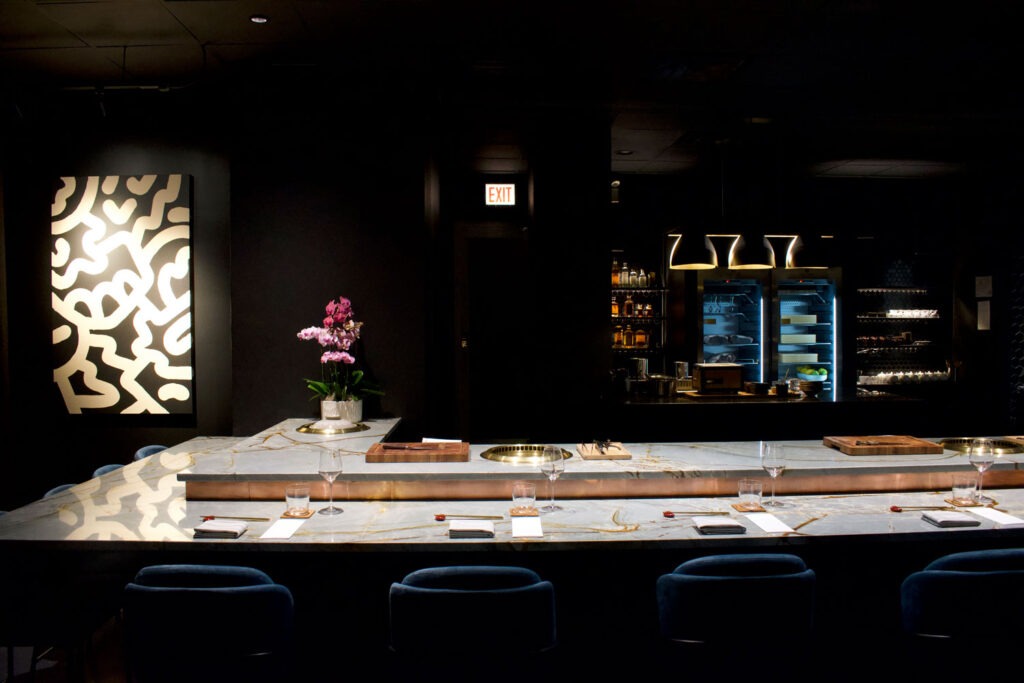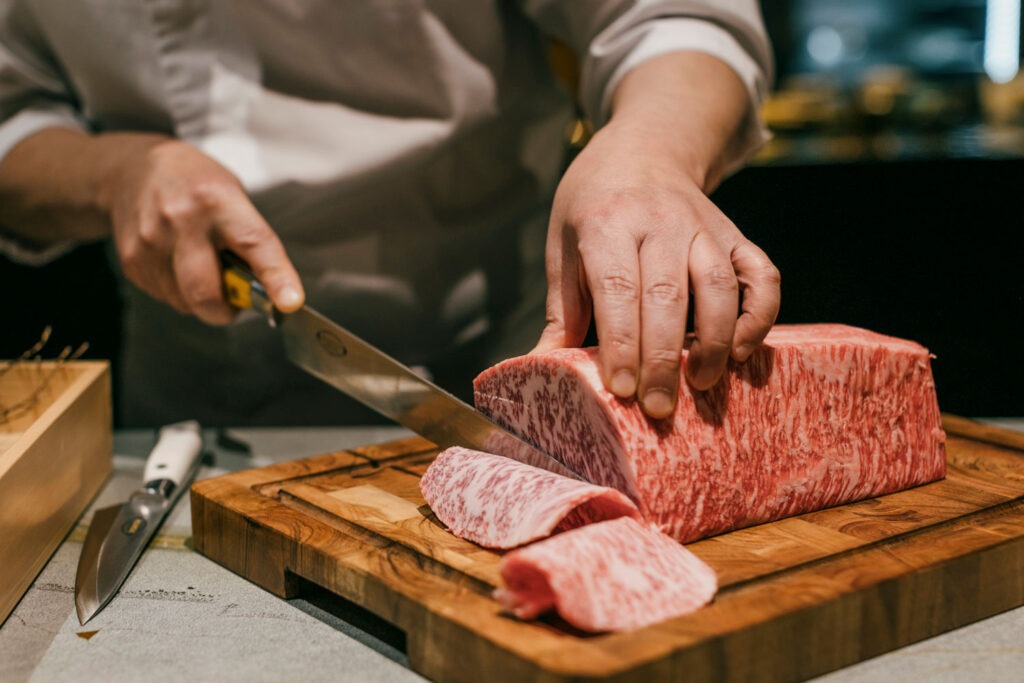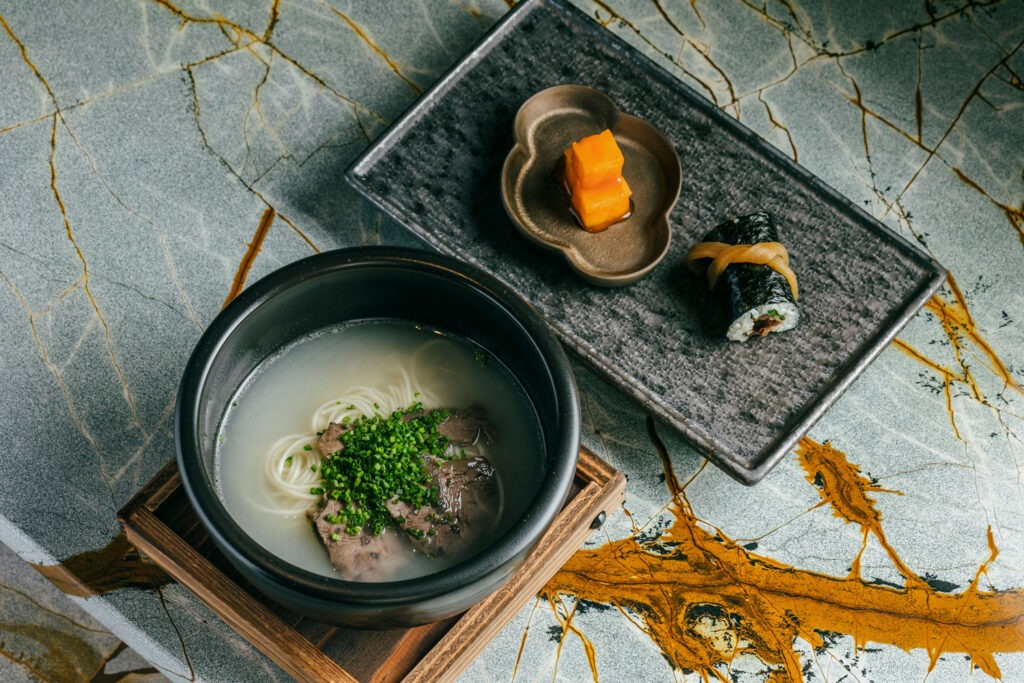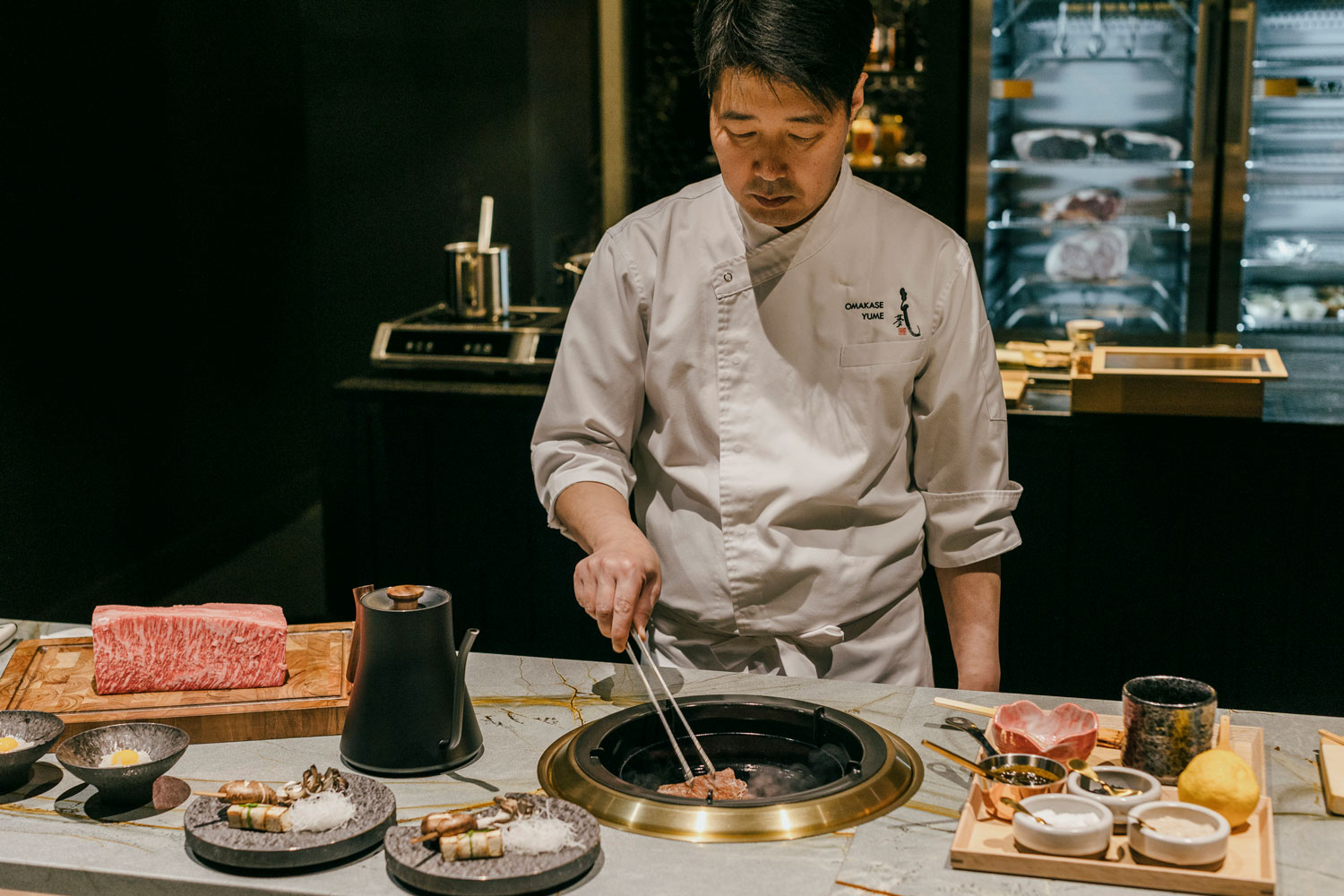
Two words: beef omakase.
Bon Yeon is a new West Loop restaurant that takes its lead from a style of high-end dining popular in Seoul and serves a chef’s tasting counter menu of small bites much like that you’d find in a premium sushi bar. Instead of sea urchin, tuna belly, and goldeneye snapper, here you sample tenderloin, ribeye cap, and outside skirt steak, each with its own flavor-enhancing garnish. The meal begins when a chef, standing in front of you by a downdraft gas grill, shows you the cuts of beef in an artful display in a wooden box, and then proceeds to sear, cut, and plate them. Most of these morsels are American Wagyu from Vander Farmers in Michigan, though Japanese A5 Kagoshima beef will make a special appearance.
Sounds expensive, right? Oooh, ya. A prepaid ticket for one costs $306 inclusive of service but not factoring in tax or beverage. Pours of wine are offered in the $40 per glass range, so when I visited with a friend I nursed a nice Japanese craft pilsner all night. I’m going to share my perplexed impression of the restaurant here but with the caveat that I’ve only been once, and when I visited last week it had been open not quite a month. I have the feeling that the format may change a bit as feedback comes in.

Bon Yeon is the third spot in what can now be called Sangtae and Kate Park’s West Loop complex. The couple opened Omakase Yume in 2018 as a venue for Sangtae to ply his fine sushi skills (and earn a Michelin star), and then they followed through with the more casual Tengoku Aburiya next door in 2020 — a restaurant I return to time and again for the kind of small plates cooking I most miss from the years I lived in Japan. For my money, it’s the best Japanese restaurant within Chicago’s city limits. The Parks so masterfully interpret this food that I was excited to see what would happen when they turned their attention to their native Korea.
Bon Yeon lies just around the corner — a hermetically sealed tasting counter, all gleaming surfaces, bright spotlighting, and the kind of easy-listening background music that has never seen the foreground. The room is done up in shades of gold, blue, and black. On the night we visited it was populated by two chefs who kept up a lively, friendly banter, two servers, and two parties of two separated by empty places.
The meal unfolds in a succession of small plates, broths, and freshly cooked and cut bites to invoke the rhythms of a sushi omakase — that swaying back and forth between dishes that ask you to tune into primal ingredients and those that push a more complex layering of flavors, underlining the chef’s hand in guiding you.

When I look back on my snapshots and try to recall the sensations of this meal, it’s all soft and gauzy — plush bites of beef punctuated by the briny slap of a Black Point oyster or a marinated Hokkaido scallop of excellent quality but served so cold it was robbed of flavor.
The beef itself was largely served grill marked just enough for it to render some fat and release aroma but raw centered. I best liked a serving of ribeye topped with aromatic slices of black winter truffle and set over a sauce made from ssamjang — the fermented bean paste that is Korea’s version of miso. The push and pull of these flavors brought out something animal and bloody in the beef.
There were some courses meant to elicit the kinds of aaaahhhhs Park must hear when he hands slices of o-toro nigiri across the counter: a slice of that grill-kissed A5 Japanese Wagyu set over a quail egg yolk nesting in rice, or cubes of short rib that spend a bit longer on the heat and paired simply with coarse smoked salt. They burst with fat.

What my palate doesn’t pick up on so much is any flavor differential between the various cuts of beef. I wonder if this is more acute in Seoul’s beef omakase places where they use local Hanwoo beef, which isn’t as high in fat as Wagyu. (Alas, this beef isn’t imported to the U.S.) These preparations are all so refined but if a chef is going to ritualize eating an animal, I kind of want the blood and guts — a chunk of mineral, muscly heart; a taste of gopchang (intestine); or a polished rendition of the Korean blood sausage called sundae. Lacking that, it might be nice just to get a sense of the relationship between meat and bone. At the tasting served in the cellar of Seoul’s Born & Bred, the chef apparently brings out a rack of ribs to show you where the most flavorful morsel comes from.
There certainly were some fun moments to this meal, such as a clever version of tteok-galbi, minced short-rib patty served here molded around a bone, and a bowl of consommé set under a cloud of yuzu foam. By the time it was over I was saying to myself that I didn’t feel overstuffed or assaulted by too much salt, and that maybe I should’ve sprung for a $40 glass of wine. Then I got home to my kitchen, where there was still rice in the rice cooker. I heated some up, opened a packet of kim seaweed and took a tub of kimchi out of the fridge. The meal left me lacking; I needed more.



